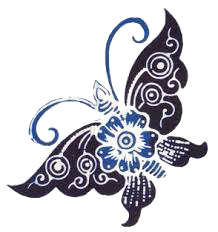The Meaning of Surjan Cloth for Javanese People
Surjan is the name of a typical Javanese fashion model, whose design pattern is taken from the pattern of the hand attitude of the person who is ready to face the opponent's attack, namely the hands crossed in front of the chest. The cross line of the two arms resting on them is taken as the edge of the garment's cleavage, with the upper end of the sleeve, i.e. the point of the middle finger, being the two points where the shirt button is placed; and form the ends of the elbows of the crossed arms as the ends of the clothes.
There are only two buttons (benik) fastening in the upper front that dangles and extends downwards, to the boundary of the front of the groin of both legs. The pattern of traditional clothing symbolizes a shield that protects the chest to the vital organs (pubic) as ethical and ethical aesthetics. While the back of the clothes to the extent above the buttocks. The word surjan is a form of tebung garba (combination of two or more words, condensed into two syllables only) namely from the word suraksa-janma (to be human).
The type and motif of the cloth used to make the surjan is not plain cloth or lurik cloth made in the country, but silk cloth decorated with various kinds of flowers, which in Javanese is called ontrokusuma. Surjan ontrokusuma is only specifically for the clothes of the Mataram nobles, while the uniforms for royal officials to soldiers, Surjan uniforms use domestic lurik fabric, with lurik motifs (straight lines).
To distinguish the level of office / position of the wearer, it is marked or distinguished from the size of the lurik motif, the basic color of the lurik cloth and the colors of the lurik. The bigger the striated means the higher the position; or the smaller the striated means the lower the position. Likewise, the basic color of the cloth and the colors of the lurik will show the rank (degree/dignity) according to the nobility title.
The testimony of Surjan Ontrokusuma's clothing information can be traced from folk tales which are still being told from generation to generation by the people along the southern coast of Cilacap Regency (formerly Merden). Narrated: When Sultan Agung was preparing to attack Batavia in 1928, people along the Merden (south coast) area of Banyumas Regency, witnessed a prince from Mataram who always wore surjan ontrokusuma, a surjan patterned with various kinds of flowers.
No one knows the name of the nobleman, so the local people call him Prince Ontrokusuma. He served as coordinator of the collection of food supplies for logistics for troops who would invade Batavia, the food was sent to Karawang, Cirebon. Meanwhile, the troops from Banyumas Regency were led by the Regent of Banyumas, Tumenggung Mertayudha.

